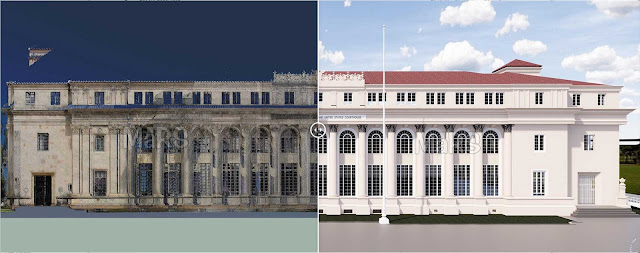What is Federal Building Scan to BIM? A Technology Transforming Historic Preservation
In the realm of architecture and historic preservation, advancements in technology are reshaping the way we approach the conservation and restoration of our cultural heritage. One such transformative technology making waves in the field is Federal Building Scan to BIM. Let's delve into what this technology entails, its significance in historic preservation, and the profound impact it's having on safeguarding our architectural legacy.
Understanding Federal Building Scan to BIM
Utilizing advanced tools like LiDAR (Light Detection and Ranging), scanners capture precise measurements and intricate details of historic federal buildings, ranging from ornate facades to structural elements hidden from plain sight. These scans serve as the foundation for BIM models, which not only replicate the physical characteristics of the buildings but also incorporate valuable metadata such as materials, construction methods, and historical significance.
The Federal Building Scan to BIM is a cutting-edge methodology that combines state-of-the-art scanning techniques with Building Information Modeling (BIM) technology. At its core, it involves the comprehensive digital documentation of federal buildings through high-precision scans and the creation of detailed 3D models that encapsulate every aspect of the structure.
The Role in Historic Preservation
Historic preservation is a delicate balancing act between honoring the past and meeting the needs of the present. Federal Building Scan to BIM technology plays a pivotal role in this endeavor by offering preservationists, architects, and stakeholders a comprehensive understanding of the structures they seek to conserve.
By digitally documenting historic federal buildings with unparalleled accuracy, Scan to BIM technology enables preservationists to create detailed preservation plans that respect the architectural integrity and historical significance of these structures. From identifying areas of deterioration to assessing structural stability, the digital models generated through this technology serve as invaluable tools in guiding preservation efforts.
Moreover, Federal Building Scan to BIM facilitates informed decision-making throughout the preservation process. By providing stakeholders with a digital representation of the building's existing conditions, complete with metadata and historical context, it empowers them to devise tailored conservation strategies that balance preservation goals with practical considerations.
Transforming Preservation Practices
The adoption of Federal Building Scan to BIM technology marks a paradigm shift in preservation practices, offering unprecedented opportunities for innovation and efficiency. Traditional methods of documentation, such as hand-drawn sketches and manual measurements, are often time-consuming and prone to inaccuracies. In contrast, Scan to BIM technology streamlines the documentation process, allowing preservationists to capture comprehensive data in a fraction of the time.
Furthermore, the digital nature of BIM models enables preservationists to collaborate more effectively with multidisciplinary teams, including architects, engineers, and historians. By providing a centralized platform where stakeholders can access and contribute to project data, Scan to BIM technology fosters greater collaboration, transparency, and synergy among all parties involved in the preservation process.
Conclusion
In conclusion, Federal Building Scan to BIM represents a transformative technology that is revolutionizing the field of historic preservation. By harnessing the power of advanced scanning techniques and digital modeling, this technology enables preservationists to document, analyze, and conserve our architectural heritage with unprecedented precision and efficiency.
As we continue to embrace the possibilities afforded by Scan to BIM technology, we stand poised to usher in a new era of preservation practices that not only honor the past but also ensure that our historic federal buildings remain vibrant and relevant for generations to come.




Comments
Post a Comment